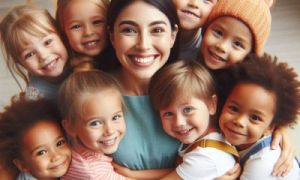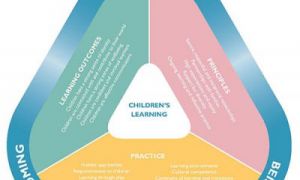A: A narrative observation in childcare is a detailed, written account of a child's actions, interactions, and behaviors over a specific period. It provides a rich, descriptive record of what the child is doing, saying, and experiencing in their environment.
Key Features of Narrative Observation
-
Detailed Description—Captures the child’s activities, interactions, and language verbatim.
-
Contextual Information—Includes details like time, setting, and people involved.
-
Objective Recording—Focuses on facts without interpretation during the observation.
-
Longer Duration—Typically lasts 20–30 minutes to gather comprehensive insights.
Why Is It Used?
-
Helps educators understand a child's development, interests, and learning style.
-
Supports planning for individualized learning experiences.
-
Provides valuable insights for assessments and reports.
How To Write A Narrative Observation
-
Choose a Focus— Decide what aspect of the child's development or behavior you want to observe (e.g., social interactions, language development, play skills).
-
Set Up the Observation—Select a time and place where the child is naturally engaged in activities. Ensure minimal interference so the child behaves naturally.
-
Record Everything in Detail—Write a continuous, objective account of what the child is doing, saying, and experiencing. Include:
-
Actions and movements
-
Interactions with peers and adults
-
Emotional responses
-
Language used (verbatim if possible)
-
-
Include Contextual Information – Note the date, time, location, and any relevant environmental factors.
-
Stay Objective – Avoid interpretations or assumptions while recording. Focus on facts rather than opinions.
-
Analyze the Observation – After recording, review the notes to identify patterns, developmental milestones, or areas needing support.
-
Use Findings for Planning – Apply insights to tailor learning experiences, support individual needs, and communicate with families.
Example of a Narrative Observation
"At 10:15 AM, Mia (3 years old) is sitting at the art table. She picks up a red crayon and begins drawing circles on her paper. She looks at her friend, Sam, and says, 'I’m making a big sun!' Sam smiles and picks up a yellow crayon. They both laugh and continue drawing together. Mia then reaches for glue and sticks small pieces of paper onto her drawing, saying, 'It’s shiny now!' She claps her hands and shows her teacher.
Based on the example observation of Mia, here’s an analysis:
1. Cognitive Development
-
Mia demonstrates creativity and imagination by describing her drawing as a "big sun."
-
She shows problem-solving skills by adding glue and paper to enhance her artwork.
-
Her ability to recognize colors and shapes suggests early cognitive development in visual processing.
2. Social and Emotional Development
-
Mia engages in positive peer interactions by sharing her idea with Sam and responding to his actions.
-
Her enthusiasm and excitement (clapping hands, showing her teacher) indicate confidence and pride in her work.
-
She expresses emotional connection through laughter and shared creativity.
3. Language and Communication Skills
-
Mia uses descriptive language ("It’s shiny now!") to express her thoughts.
-
She engages in conversation with peers, demonstrating early social communication skills.
-
Her ability to verbalize ideas shows growing language proficiency.
4. Fine Motor Skills
-
Mia grasps crayons and glue, showing control over small movements.
-
She applies glue and sticks paper, demonstrating hand-eye coordination.
-
Her ability to draw circles suggests developing precision in motor skills.
5. Learning and Engagement
-
Mia is actively engaged in the activity, showing sustained attention.
-
She experiments with materials, indicating curiosity and exploration.
-
Her interaction with peers and teachers supports collaborative learning.
Next Steps for Educators
-
Encourage more collaborative art activities to strengthen social skills.
-
Provide opportunities for verbal expression through storytelling or group discussions.
-
Support fine motor development with activities like cutting, tracing, and painting.
Linking To The EYLF
Linking narrative observations to the EYLF helps educators assess children's development and plan meaningful learning experiences. Here’s how you can connect observations to EYLF outcomes:
EYLF Learning Outcomes
-
Children Have a Strong Sense of Identity
-
If a child confidently engages in an activity, expresses emotions, or interacts positively with peers, it reflects their growing independence and self-awareness.
-
Example: Mia chose a red crayon and described her drawing as a "big sun," showing confidence in her creative choices.
-
-
Children Are Connected With and Contribute to Their World
-
Observations of children collaborating, sharing, or engaging in cultural experiences align with this outcome.
-
Example: Mia and Sam worked together on their artwork, demonstrating social connection and teamwork.
-
-
Children Have a Strong Sense of Wellbeing
-
If a child shows resilience, emotional regulation, or physical coordination, it supports their wellbeing.
-
Example: Mia clapped her hands and showed her teacher her artwork, expressing pride and emotional satisfaction.
-
-
Children Are Confident and Involved Learners
-
When children explore, problem-solve, and persist in tasks, they demonstrate active learning.
-
Example: Mia experimented with glue and paper to enhance her drawing, showing curiosity and problem-solving skills.
-
-
Children Are Effective Communicators
-
If a child uses verbal or non-verbal communication to express ideas, it links to this outcome.
-
Example: Mia described her artwork and engaged in conversation with Sam, demonstrating language development.
-
Further Reading
Different Types Of Observation Methods
Observations in Childcare


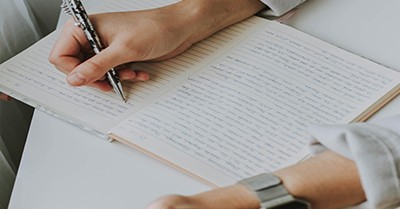
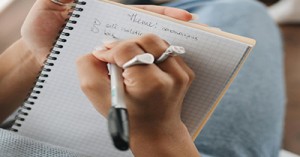
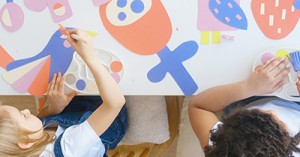
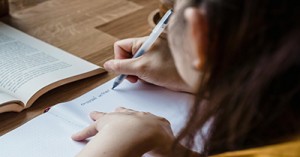

 Here is the list of the EYLF Learning Outcomes that you can use as a guide or reference for your documentation and planning. The EYLF
Here is the list of the EYLF Learning Outcomes that you can use as a guide or reference for your documentation and planning. The EYLF The EYLF is a guide which consists of Principles, Practices and 5 main Learning Outcomes along with each of their sub outcomes, based on identity,
The EYLF is a guide which consists of Principles, Practices and 5 main Learning Outcomes along with each of their sub outcomes, based on identity, This is a guide on How to Write a Learning Story. It provides information on What Is A Learning Story, Writing A Learning Story, Sample
This is a guide on How to Write a Learning Story. It provides information on What Is A Learning Story, Writing A Learning Story, Sample One of the most important types of documentation methods that educators needs to be familiar with are “observations”. Observations are crucial for all early childhood
One of the most important types of documentation methods that educators needs to be familiar with are “observations”. Observations are crucial for all early childhood To support children achieve learning outcomes from the EYLF Framework, the following list gives educators examples of how to promote children's learning in each individual
To support children achieve learning outcomes from the EYLF Framework, the following list gives educators examples of how to promote children's learning in each individual Reflective practice is learning from everyday situations and issues and concerns that arise which form part of our daily routine while working in an early
Reflective practice is learning from everyday situations and issues and concerns that arise which form part of our daily routine while working in an early Within Australia, Programming and Planning is reflected and supported by the Early Years Learning Framework. Educators within early childhood settings, use the EYLF to guide
Within Australia, Programming and Planning is reflected and supported by the Early Years Learning Framework. Educators within early childhood settings, use the EYLF to guide When observing children, it's important that we use a range of different observation methods from running records, learning stories to photographs and work samples. Using
When observing children, it's important that we use a range of different observation methods from running records, learning stories to photographs and work samples. Using This is a guide for educators on what to observe under each sub learning outcome from the EYLF Framework, when a child is engaged in
This is a guide for educators on what to observe under each sub learning outcome from the EYLF Framework, when a child is engaged in The Early Years Learning Framework describes the curriculum as “all the interactions, experiences, activities, routines and events, planned and unplanned, that occur in an environment
The Early Years Learning Framework describes the curriculum as “all the interactions, experiences, activities, routines and events, planned and unplanned, that occur in an environment
